Cebu is often hailed as a culinary powerhouse in the Philippines, most famously for its legendary Lechon. But beyond this iconic roast pig lies a treasure trove of Cebu delicacies waiting to be discovered. From sweet, crumbly cookies to savory, crispy snacks and unique local specialties, Cebu offers a diverse palette of flavors that will delight any foodie.
If you’re ready to embark on a delicious journey and explore what to eat in Cebu beyond the usual, this list of 10 must-try Cebu delicacies is your perfect starting point. Get your taste buds ready!
See also: The Top 7 Must Haves Every Traveler Needs
1. Lechon Cebu: The Undisputed King
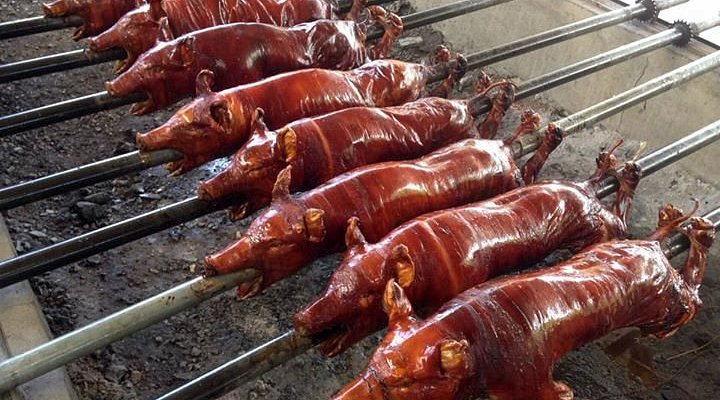
- What it is: While famous nationwide, Lechon Cebu has a distinct reputation. It’s a whole roasted pig, slow-cooked over charcoal, resulting in incredibly crispy, flavorful skin and succulent, tender meat. What often sets it apart is the stuffing of aromatics like lemongrass, garlic, onions, and local herbs, meaning it’s often flavorful enough to be eaten without sauce.
- Why it’s a Cebu delicacy: Cebuanos have perfected the art of lechon-making, and many consider it the best in the country.
- Where to Find It: Numerous lechon restaurants and stalls across Cebu City (e.g., Rico’s Lechon, House of Lechon, CnT Lechon, Carcar Public Market for a more local experience).
- Pasalubong Potential: Possible, as many places offer it packed for takeaway, but best enjoyed fresh. Check airline regulations if flying.
2. Dried Mangoes: Cebu’s Sweet Sunshine Export
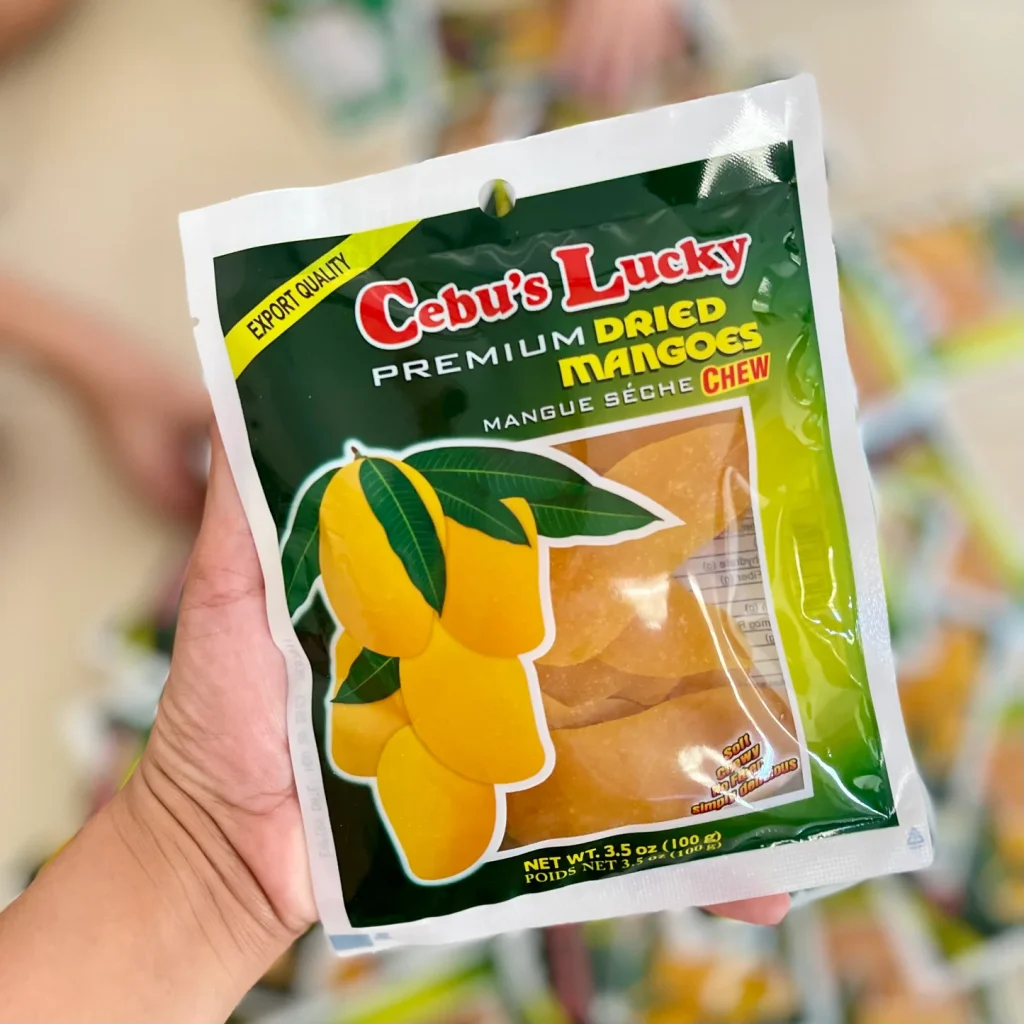
- What it is: Sweet, chewy slices of ripe Philippine mangoes, dried to perfection. Cebu is the leading producer and exporter of this iconic Filipino treat. You can also find variations like green dried mangoes (tangier) or those dipped in dark chocolate.
- Why it’s a Cebu specialty: Cebu’s mangoes are renowned for their sweetness, making their dried version exceptionally delicious.
- Where to Find It: Supermarkets, pasalubong centers (like Islands Souvenirs, Kultura), airport shops, and specialty dried fruit stores throughout Cebu. Popular brands include Profood Cebu (Philippine Brand), 7D, and R&M.
- Pasalubong Potential: Excellent! Lightweight, long shelf life, and universally loved.
3. Otap: The Crisp & Flaky Local Biscuit
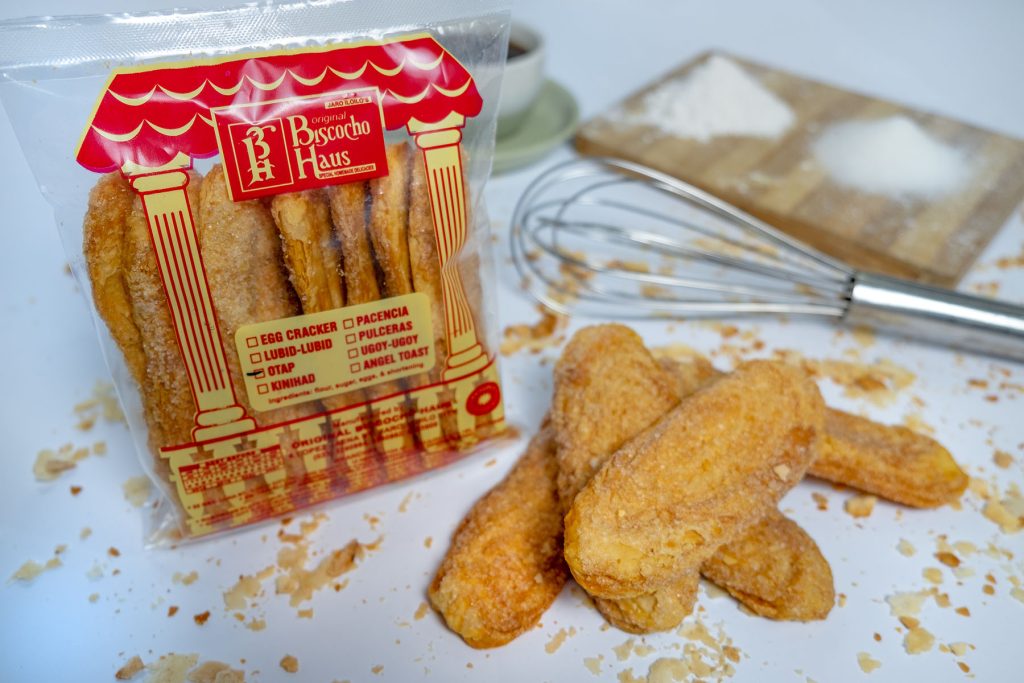
- What it is: A brittle, oblong-shaped puff pastry biscuit that’s sprinkled with sugar. It’s known for its incredible flakiness and satisfying crunch, making it a perfect partner for coffee or tea.
- Why it’s a Cebu specialty: A well-loved traditional Cebuano baked good.
- Where to Find It: Shamrock Pasalubong Centers are famous for their Otap. Also available in many local bakeries and supermarkets in Cebu.
- Pasalubong Potential: Very good. They are usually packaged in tubes or boxes to protect their delicate structure. One of the best cebu delicacies.
4. Rosquillos: The Scalloped Butter Cookie from Liloan

- What it is: Distinctive, scallop-edged ring-shaped cookies that are buttery, slightly sweet, and have a delicate, crisp texture.
- Why it’s a Cebu specialty: These cookies originated in Liloan, Cebu, created by Margarita “Titay” Frasco in 1907. Titay’s Liloan Rosquillos and Delicacies is still the most famous brand.
- Where to Find It: Titay’s outlets, pasalubong centers, and supermarkets across Cebu.
- Pasalubong Potential: Excellent. They are iconic, delicious, and travel well.
5. Masareal: The Sweet Peanut Nougat Bar

- What it is: A flat, rectangular bar made primarily from finely ground peanuts and sugar (or syrup). It has a soft, chewy, nougat-like consistency and a rich, nutty sweetness.
- Why it’s a Cebu specialty: Mandaue City in Cebu is particularly known for producing authentic Masareal.
- Where to Find It: Pasalubong shops, local markets (especially in Mandaue), and some supermarkets. Look for brands that specialize in this treat.
- Pasalubong Potential: Good. It’s a unique, sweet treat that offers a different texture and flavor profile.
6. Chicharon from Carcar: The Ultimate Crispy Pork Rind

- What it is: While chicharon (crispy pork rinds) is found throughout the Philippines, Carcar City in southern Cebu is legendary for its version. It’s deep-fried to achieve an incredibly airy, bubbly crispness, often sold with bits of meat attached (chicharon with laman) and served with a potent local vinegar dip.
- Why it’s a Cebu specialty: Carcar has elevated chicharon-making to an art form, drawing visitors specifically for this snack.
- Where to Find It: Carcar Public Market is the chicharon epicenter. Also available from Carcar-based brands in Cebu City pasalubong stores.
- Pasalubong Potential: Good, especially the commercially packaged ones. If buying fresh from the market, consume quickly or be mindful of transport for hygiene and customs (if applicable).
7. Danggit (Dried Salted Rabbitfish): Taboan Market’s Aromatic Star
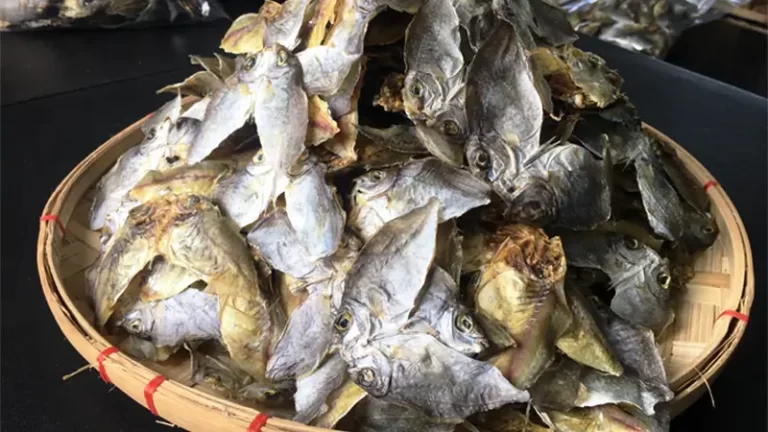
- What it is: Salted and sun-dried rabbitfish (though other types of dried fish like pusit/squid and espada/beltfish are also popular). When fried, danggit becomes incredibly crispy and is a popular Filipino breakfast item, often served with garlic rice and eggs (dangsilog).
- Why it’s a Cebu specialty: Taboan Public Market in Cebu City is the most famous place to buy danggit and other dried seafood. The aroma is unforgettable!
- Where to Find It: Taboan Public Market is a must-visit for the best selection and experience. Packaged versions are also in supermarkets.
- Pasalubong Potential: Very popular, but be warned – the smell is strong! Reputable vendors at Taboan will pack it in sealed plastic and newspaper to minimize the odor during travel.
8. Torta Cebuana (Argao’s Special): The Rich & Eggy “Cupcake”
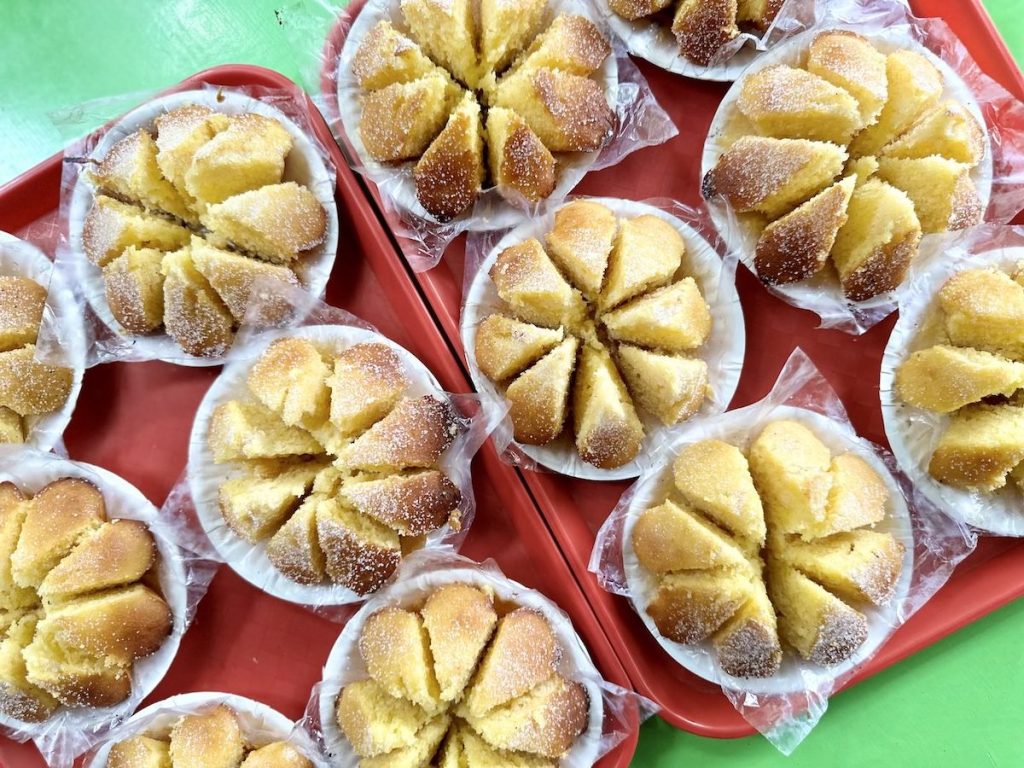
- What it is: Not your typical light and fluffy cake. Torta Cebuana, especially the version from Argao in southern Cebu, is a rich, dense, and moist mini-cake or oversized muffin made with a significant amount of egg yolks, flour, sugar, and traditionally, lard. It often has a slightly savory note from the lard and is sometimes flavored with tuba (coconut wine).
- Why it’s a Cebu specialty: A heritage recipe, particularly from Argao, showcasing a traditional baking style.
- Where to Find It: Local bakeries in Argao. Pasalubong centers in Cebu City sometimes stock Torta from well-known Argao bakers.
- Pasalubong Potential: Good. They are relatively sturdy and keep well for a few days.
9. Masi sa Liloan: Sweet Peanut-Stuffed Rice Balls
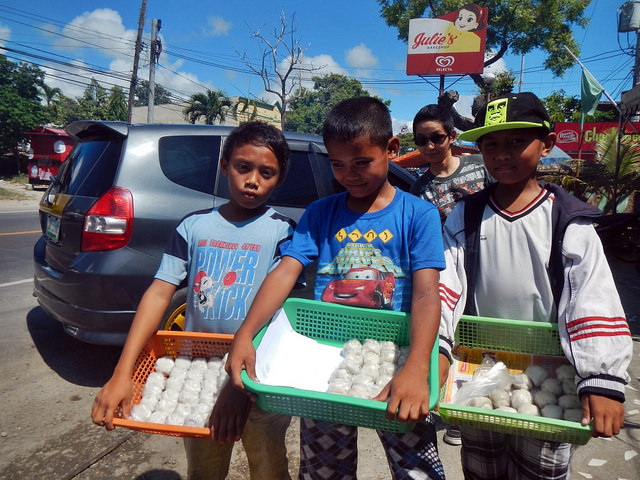
- What it is: Soft, chewy glutinous rice flour (pilit) balls filled with a sweet mixture of ground roasted peanuts and muscovado sugar or brown sugar.
- Why it’s a Cebu specialty: Another beloved kakanin (rice-based delicacy) particularly associated with the town of Liloan, Cebu (the same place famous for Rosquillos).
- Where to Find It: Vendors in Liloan, especially near the market or church. Some specialty kakanin stalls in Cebu City might also offer it.
- Pasalubong Potential: Best enjoyed fresh as they can harden over time. If buying to take away, consume within the day for the best texture.
10. Puso (Hanging Rice): The Iconic Cebuano Staple
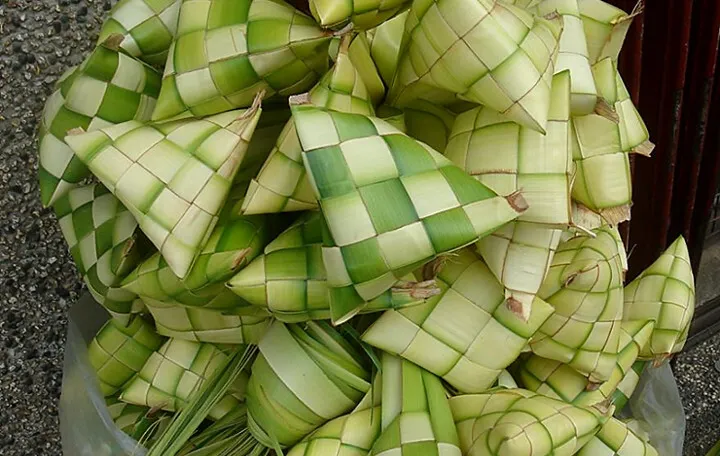
- What it is: Rice wrapped and boiled in intricately woven heart-shaped coconut frond casings (locally called lukay). The woven pouch imparts a subtle leafy aroma to the rice.
- Why it’s a Cebu specialty: While found in other parts of Visayas and Mindanao, puso is ubiquitously Cebuano. It’s a convenient, pre-portioned, and hygienic way to serve rice, especially at outdoor eateries, barbecue stalls, and street food setups.
- Where to Find It: Everywhere in Cebu where rice is served with meals – from street food vendors and barbecue joints (pungko-pungko) to some local restaurants.
- Pasalubong Potential: Not really a pasalubong item to take home, but an absolute must-try experience while in Cebu. It’s part of the quintessential Cebuano dining scene.
Where to Embark on Your Cebu Delicacies Food Hunt:
- Pasalubong Centers: Shops like Shamrock, Titay’s Liloan Rosquillos outlets, Islands Souvenirs, and Kultura Filipino are excellent for packaged delicacies like dried mangoes, otap, rosquillos, and masareal.
- Public Markets: Head to Taboan Market for dried fish (be prepared for the potent aroma!) and Carbon Market for a wider array of local produce and snacks. Carcar Public Market is the go-to for chicharon.
- Local Bakeries & Specialty Stalls: Keep an eye out for local bakeries, especially outside the main city areas, for fresh torta, masi, and other kakanin.
- Supermarkets: A convenient option for many packaged Cebu delicacies and national brands.
Exploring the world of Cebu delicacies is an adventure for your taste buds and a wonderful way to connect with the local culture. So, on your next trip, be sure to step beyond the lechon and discover the diverse and delicious treats that make Cebuano cuisine so special!
What are your favorite Cebu delicacies? Are there any other local treats that visitors absolutely must try? Share your recommendations in the comments below!


Leave a Reply